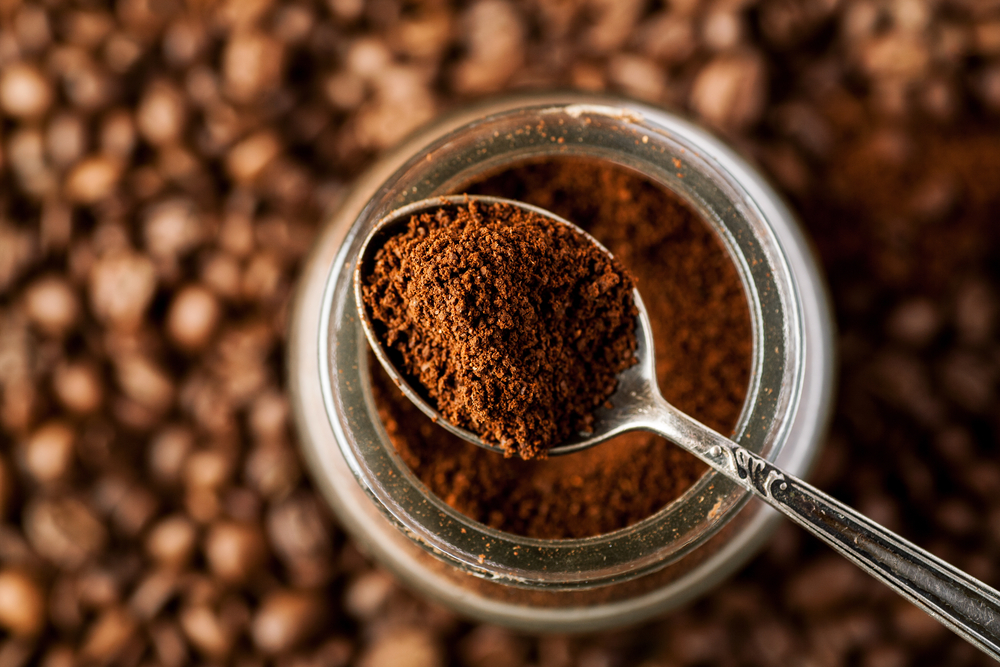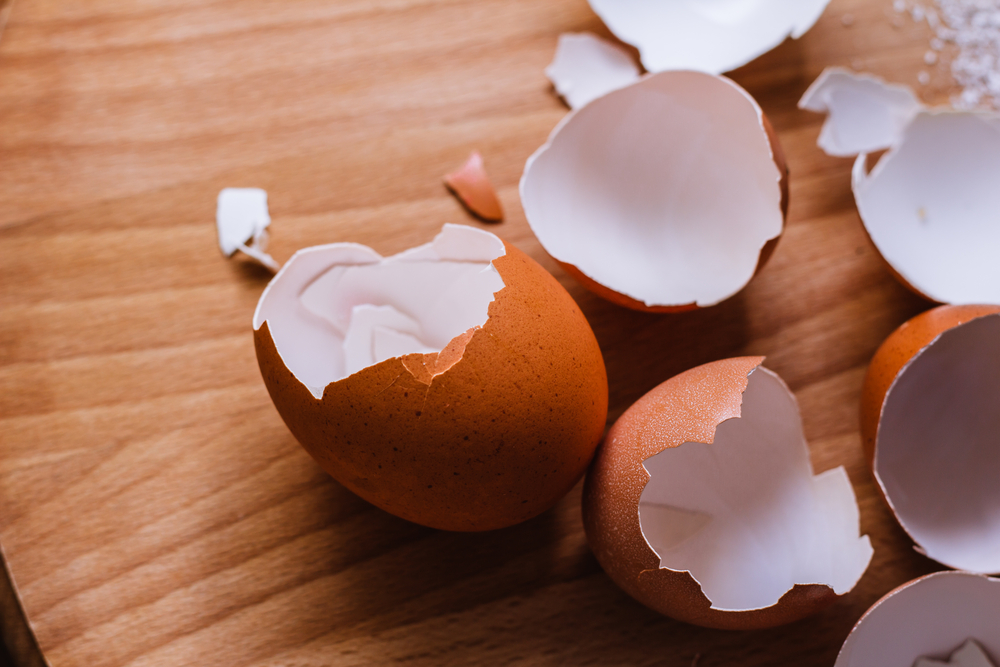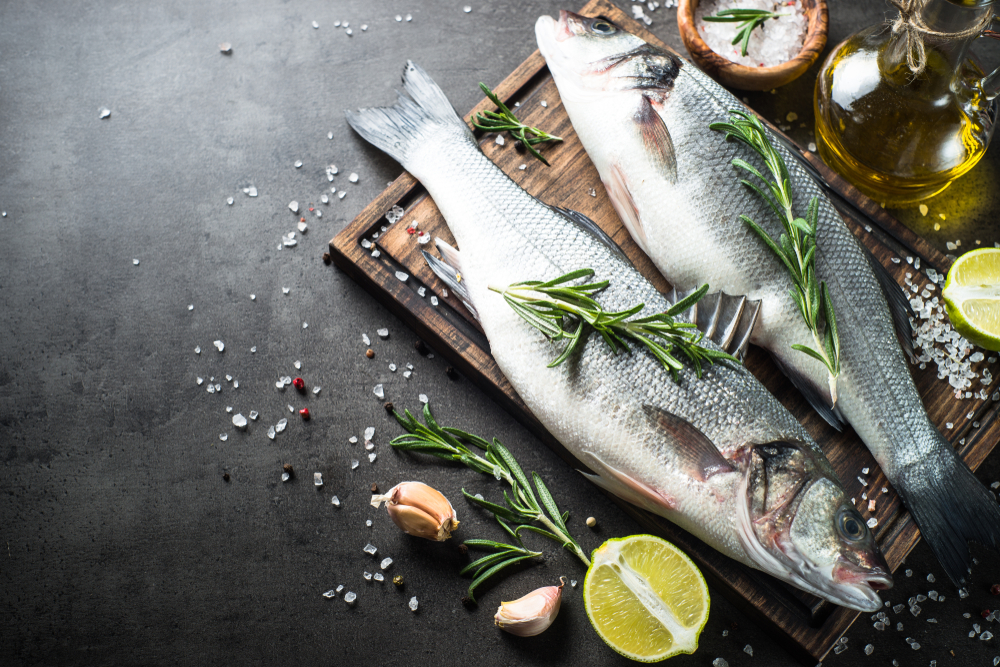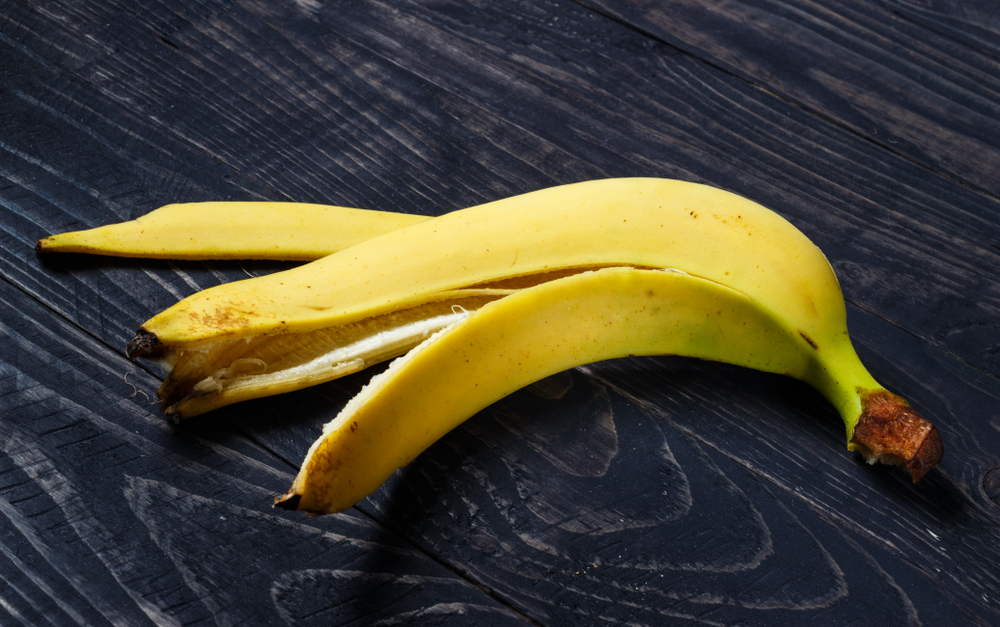Five Foods You Can Substitute For Garden Fertilizer
Keep your plant babies growing on a healthy balanced diet.
Five Foods You Can Substitute For Garden Fertilizer
Keep your plant babies growing on a healthy balanced diet.

Wake up and smell the coffee—these grounds can help your garden grow. by Glevalex on Shutterstock
If you were raising a human, you’d want to make sure that it was eating properly. The same goes for your garden babies.
Plants thrive on a number of micronutrients, but the three common ingredients found in store bought fertilizer include nitrogen, phosphorus and potassium—otherwise known as NPK.
And all of these essential nutrients can likely be found right in your home. If you don’t want to leave your house to purchase plant food, chances are you don’t have to.
We’ve put together a list of five foods likely in your kitchen that you can use instead of making a trip to your garden store for fertilizer.
Coffee Grounds
Coffee grounds contain about two percent nitrogen, 0.06 percent phosphorus, and 0.6 percent potassium by volume. They also contain many micronutrients such as calcium, magnesium, boron, copper, iron, and zinc.
You can sprinkle them about in your soil with a quarter-inch layer and work it in with your hands.
As a bonus, many gardeners say that coffee grounds can act as a pest repellent to snails and slugs. However, there is very little research to prove this.

Egg Shells
Eggshells contain calcium, which plays a role in the strength and thickness of plant cell walls. Broken down egg shells on average contain 39.15 percent calcium, 0.4 percent nitrogen and 0.38 percent magnesium.
You can rinse out your eggshells or let them dry in the sun. You can also create a liquid fertilizer using your shells in a mason jar full of water. After four weeks of sitting in the water, it will be ready to start fertilizing with.
Add one cup of this mixture to one gallon of water and water accordingly around your plants.
For a dry fertilizer, take your dry eggshells and blend or crush them up. Blending the eggshells into a powder will speed up the fertilization process. Whether its powder or tiny shells, sprinkle them on the soil around your plants. We recommend you use 4-5 eggs for each plant you want to fertilize. Mix the shells into the soil and add water.

Milk
Milk contains all three common ingredients found in fertilizer. As we all know, it’s also a healthy source of calcium. Researchers have recently suggested that it can be used for a fertilizer substitute on farms.
To use milk as a fertilizer, combine 50 percent milk or powdered milk with 50 percent water. Pour the mixture around the plant’s roots for best results. You can also apply the solution on your plants leaves using a spray bottle.

Fish
Using your fish scraps as a fertilizer will help provide all three common nutrients found in fertilizer. Fish are especially good for a nitrogen boost.
You can grind up your fish parts to make your own fertilizer. It’s recommended that you use a hand grinder or a stick blender as opposed to a kitchen blender. Work this into your soil and bury the chunks of fish at the roots of your plants.
Alternatively, you can make a mixture that contains one part fish, three parts sawdust and one bottle of unsulfured molasses. Put your ingredients into a container with a lid for about two weeks until the fish is broken down. Ensure you are stirring the mixture daily.
When you’re ready to use this on your garden, you can use about one tablespoon of your mixture per one gallon of water. You can spray it on your plant’s leaves or at the base of plants.

Banana Peels
Banana peels can hold up to 42 percent potassium and up to 25 percent phosphorous. Other beneficial nutrients in the peel include calcium, magnesium and sulfur.
There are a number of ways that banana peels can be used as fertilizer for your garden. You can soak them inside a mason jar and use the water from the jar as a fertilizer.
If you have them inside the jar, make sure your banana peels are fully immersed or else they will turn moldy. Keep the banana peels in the water for about a week. You can use this mixture with five parts water and water your plants how you would normally.
Alternatively you can dry out the peels for a day in the sun and break them up into tiny pieces. Add them to the soil anywhere from the surface to about four inches down.
Follow us
This work is licensed under a Creative Commons Attribution-NoDerivatives 4.0 International License.
Want to republish a Modern Farmer story?
We are happy for Modern Farmer stories to be shared, and encourage you to republish our articles for your audience. When doing so, we ask that you follow these guidelines:
Please credit us and our writers
For the author byline, please use “Author Name, Modern Farmer.” At the top of our stories, if on the web, please include this text and link: “This story was originally published by Modern Farmer.”
Please make sure to include a link back to either our home page or the article URL.
At the bottom of the story, please include the following text:
“Modern Farmer is a nonprofit initiative dedicated to raising awareness and catalyzing action at the intersection of food, agriculture, and society. Read more at <link>Modern Farmer</link>.”
Use our widget
We’d like to be able to track our stories, so we ask that if you republish our content, you do so using our widget (located on the left hand side of the article). The HTML code has a built-in tracker that tells us the data and domain where the story was published, as well as view counts.
Check the image requirements
It’s your responsibility to confirm you're licensed to republish images in our articles. Some images, such as those from commercial providers, don't allow their images to be republished without permission or payment. Copyright terms are generally listed in the image caption and attribution. You are welcome to omit our images or substitute with your own. Charts and interactive graphics follow the same rules.
Don’t change too much. Or, ask us first.
Articles must be republished in their entirety. It’s okay to change references to time (“today” to “yesterday”) or location (“Iowa City, IA” to “here”). But please keep everything else the same.
If you feel strongly that a more material edit needs to be made, get in touch with us at [email protected]. We’re happy to discuss it with the original author, but we must have prior approval for changes before publication.
Special cases
Extracts. You may run the first few lines or paragraphs of the article and then say: “Read the full article at Modern Farmer” with a link back to the original article.
Quotes. You may quote authors provided you include a link back to the article URL.
Translations. These require writer approval. To inquire about translation of a Modern Farmer article, contact us at [email protected]
Signed consent / copyright release forms. These are not required, provided you are following these guidelines.
Print. Articles can be republished in print under these same rules, with the exception that you do not need to include the links.
Tag us
When sharing the story on social media, please tag us using the following: - Twitter (@ModFarm) - Facebook (@ModernFarmerMedia) - Instagram (@modfarm)
Use our content respectfully
Modern Farmer is a nonprofit and as such we share our content for free and in good faith in order to reach new audiences. Respectfully,
No selling ads against our stories. It’s okay to put our stories on pages with ads.
Don’t republish our material wholesale, or automatically; you need to select stories to be republished individually.
You have no rights to sell, license, syndicate, or otherwise represent yourself as the authorized owner of our material to any third parties. This means that you cannot actively publish or submit our work for syndication to third party platforms or apps like Apple News or Google News. We understand that publishers cannot fully control when certain third parties automatically summarize or crawl content from publishers’ own sites.
Keep in touch
We want to hear from you if you love Modern Farmer content, have a collaboration idea, or anything else to share. As a nonprofit outlet, we work in service of our community and are always open to comments, feedback, and ideas. Contact us at [email protected].by Lindsay Campbell, Modern Farmer
June 22, 2020
Modern Farmer Weekly
Solutions Hub
Innovations, ideas and inspiration. Actionable solutions for a resilient food system.
ExploreExplore other topics
Share With Us
We want to hear from Modern Farmer readers who have thoughtful commentary, actionable solutions, or helpful ideas to share.
SubmitNecessary cookies are absolutely essential for the website to function properly. This category only includes cookies that ensures basic functionalities and security features of the website. These cookies do not store any personal information.
Any cookies that may not be particularly necessary for the website to function and are used specifically to collect user personal data via analytics, ads, other embedded contents are termed as non-necessary cookies.
Hey, I used to dumpster dive for food. It pains me to think of all the food waste, both edible and no longer edible, that goes into grocery store compactors and then to landfills. That stuff really should be diverted to agricultural and soil building purposes!
Thinking it’s important to suggest buying organic both for the health of the farmers and their families and birds as well as the health of the end user. Therefore it’s also important I would imagine in the use of coffee grounds and banana skins etc. as garden fertilizer on vegetable gardens. Circular economy and good health for All Beings!
I only use inedible peels, shells & scraps, I NEVER use up edible food that could feed people directly as fertilizer. I do mulch all my fall leaves and plant remains from my yard back into the yard.
What about tea after use
Interesting, fun if you have time. Or you can just add all of the above to your compost pile (I’d probably skip the milk in that case, unless it had gone sour).
Coffee grounds or grinds as we say here stop the snails in my garden, even on my little hosta.
Love your recommendations for plant feeding, just wonderful!
Such a personal, natural and easy way to enhance !
I think this makes folks more engaged in their environment!
So how many banana peels do you suggest to the acre?
I read where the coffee grounds leave caffeine in soil which is harmful to plants, is this true or not ?
Just starting to make my own fertilizers. So longtime gardener but novice at homemade fertilizer